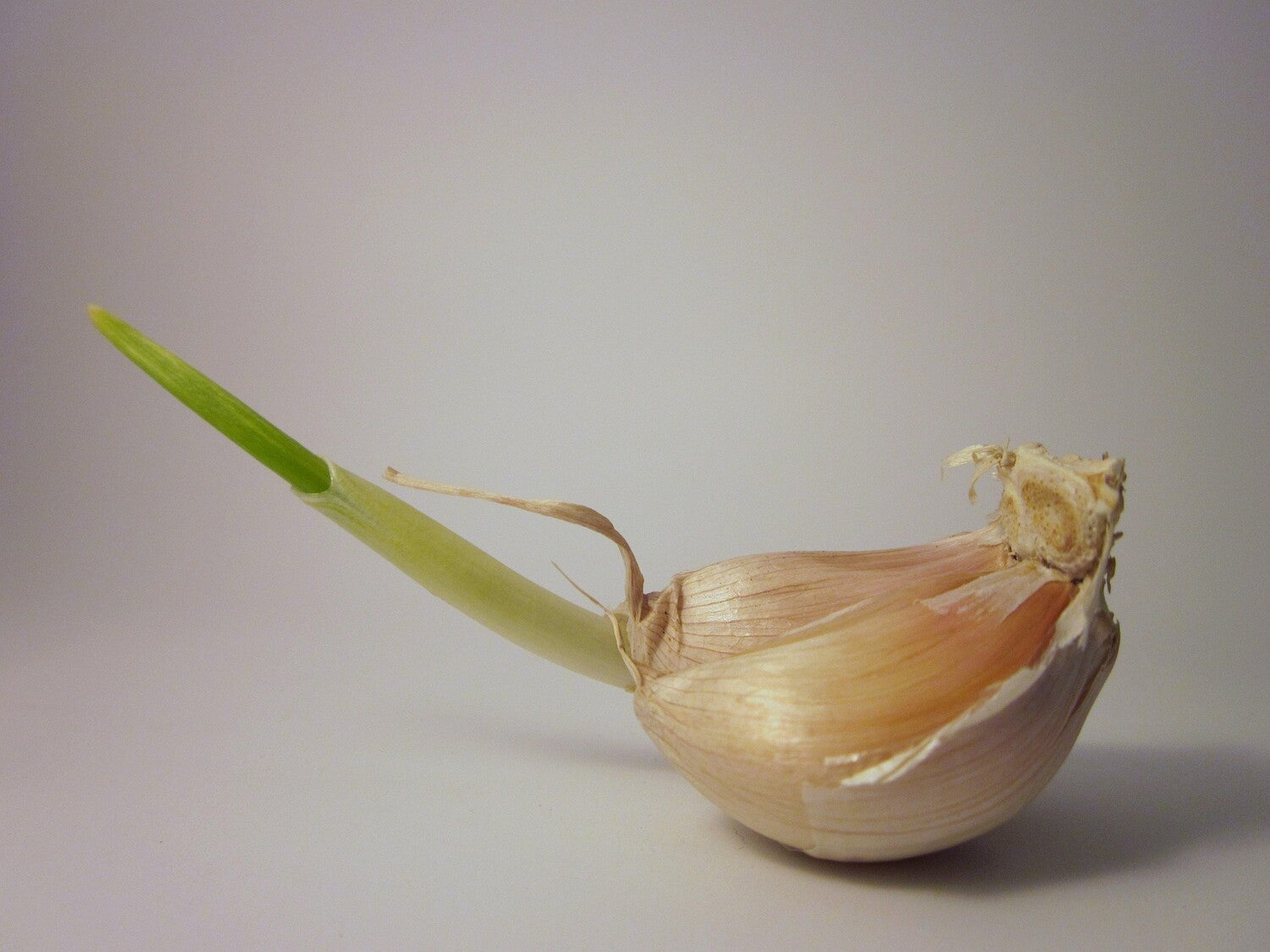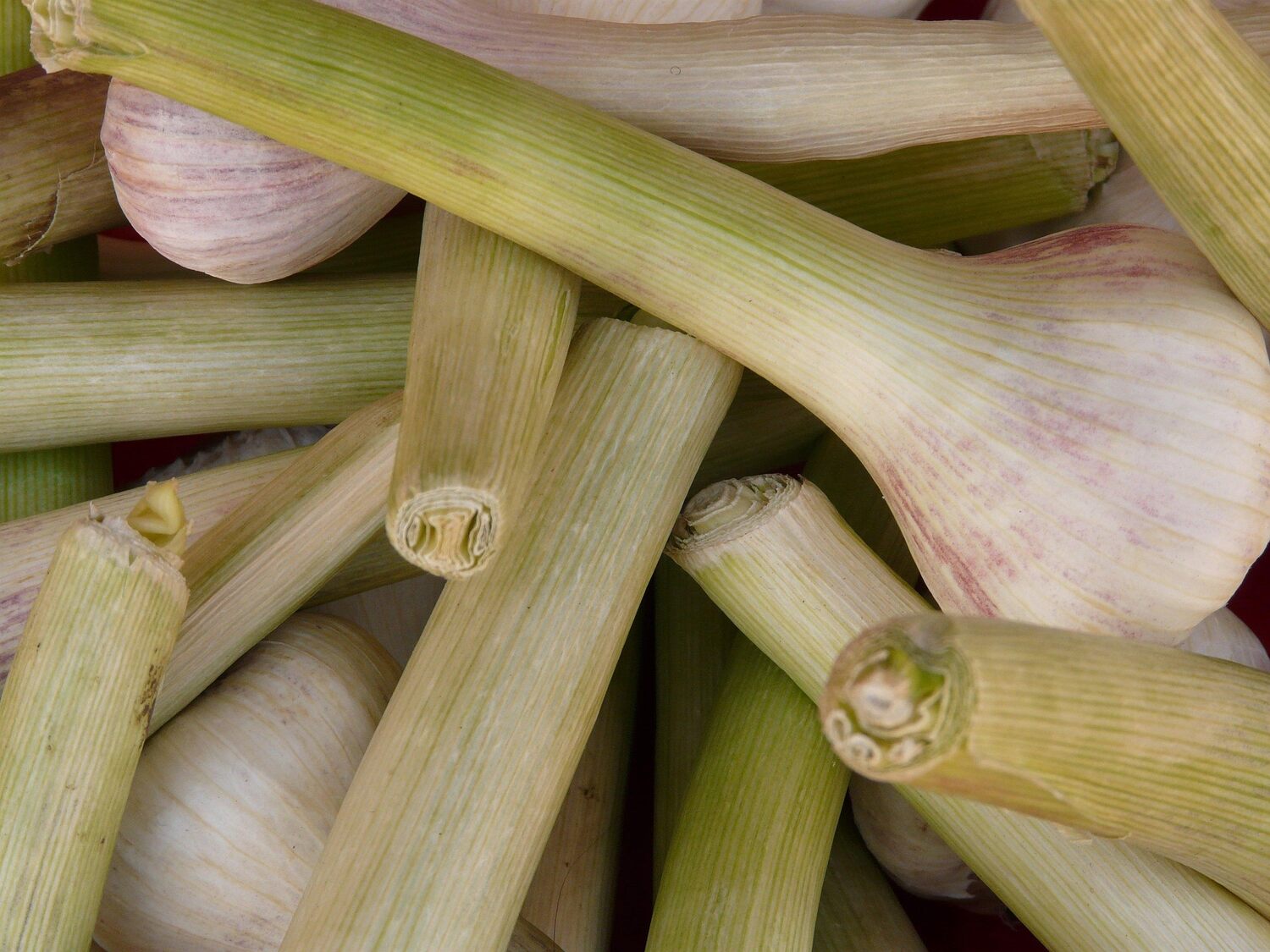Garlic volunteers can appear unexpectedly among other plants, potentially leading to overcrowding and reduced garlic yields if left unmanaged. Our ability to spot these volunteers allows us to relocate them for intentional cultivation or remove them to protect planned plantings. Master the art of spotting unexpected garlic growth with our expert tips on how to identify a garlic volunteer.
How to Identify a Garlic Volunteer
Garlic volunteers are self-planted garlic plants that emerge from cloves left behind after harvest or from bulbs that have naturally divided in the soil. Their distinct characteristics include flat leaves with V-shaped channels that grow in a fan pattern, a pseudostem formed by overlapping leaf bases, and a strong garlic aroma when the leaves are crushed.

Identifying a garlic volunteer allows you to spot new growth in your garden and gives you another chance to harvest fresh garlic. Learn whether to nurture these surprise additions or relocate them to more appropriate growing spaces.
Understanding Garlic Volunteers
A garlic volunteer is a garlic plant that grows on its own without being purposely planted. Sometimes, bulbs split and are left behind after a harvest, or a garlic head breaks apart, leaving some cloves in the soil. Because garlic, or Allium sativum, is a hardy plant, even these leftovers can sprout when conditions are right.
- Volunteers usually appear when you miss some cloves during harvest or when small bulbils drop from garlic flower heads.
- Animals or digging tools can dislodge cloves, allowing new plants to pop up in unexpected spots.
- Moist, loose soil and an undisturbed site make it more likely that garlic will come back as volunteers.
You may find a garlic volunteer near spots where you planted garlic last season.
- Old garlic beds
- Along fence lines or garden edges
- In compost piles mixed with garlic scraps
- In recently moved or tilled soil from garlic-growing areas
Visual Characteristics of a Garlic Volunteer
A garlic volunteer has several unique features that make it easy to spot in your garden.
|
Characteristic |
Details |
|
Leaf shape and arrangement |
Flat leaves with a V-shaped channel growing in a fan pattern from a central point |
|
Stem (pseudostem) |
No true stem; has a solid cylindrical structure formed by overlapping leaf bases |
|
Root structure |
Fibrous white roots are concentrated beneath the developing bulb |
|
Smell |
Strong garlic aroma when leaves are crushed or rubbed |
|
Flowers |
No flowers on young volunteers; garlic varieties will only produce a scape |
|
Bulb |
Slight swelling at the base of leaves that develops into a single bulb |
1. Leaf Shape and Arrangement
Garlic volunteers have long, flat, and slender leaves. They often have a grayish-green or blue-green color rather than the bright green of grass.
Leaves grow from the base in a fan-like pattern. You’ll also notice that the tips of the leaves are pointed and sometimes curl slightly as the plant matures.

2. Pseudostem
The stem, often called a pseudostem, is made up of tightly packed leaf bases. It looks like a short, sturdy stalk that stands upright from the ground.
Unlike some other plants, the pseudostem of garlic doesn't have branches or nodes. On hardneck varieties like Belarus and German White, you might see a thin, curly flower stalk called a scape emerging from the center above the pseudostem.
3. Root Structure
Garlic volunteers have a shallow yet wide root system. The roots are stringy and fibrous, spreading out from the bulb's base just below the soil surface.
A mature garlic plant's root ball is usually about four to six inches wide. Unlike bulbs from deep-rooted plants, garlic’s roots tend to be close to the topsoil and may even appear above the soil line if it’s been disturbed.
4. Smell
One of the fastest ways to check if you have a garlic volunteer is by rubbing or breaking a leaf. Gently crush a leaf between your fingers.
You’ll immediately notice a strong, spicy, unmistakable garlic scent if it’s true garlic. If you don’t smell anything or it smells like onion or something else, it may not be garlic.
5. Absence of Flowers
Most garlic varieties, especially the kind you find sprouting in gardens, don't develop blooms like other plants. Instead, hardneck garlic may send up a flower stalk called a scape.
If you see a tall, curly green stalk (the scape), it may make a tight coil or two before straightening out. This scape is topped with a pod containing small, round bulbils and sometimes a few tiny greenish florets.
6. Bulb Formation
Mature garlic volunteers form a small, segmented bulb underground. Each bulb is made up of several individual cloves tightly packed together. The outer layer is usually a thin, papery white or purple skin.
Most mature volunteers form bulbs about one to two inches wide. If the bulbs look like little onions and don't split into segments, you may be dealing with another allium rather than garlic.

Control Measures for a Garlic Volunteer
It’s common for extra garlic plants to sprout where you didn’t plan them. Here are some tips for controlling garlic volunteers:
- Pull the volunteers by hand when you spot them
- Inspect your garden regularly in early spring.
- Remove plants before they mature and set more seeds.
- Use mulch for extra control.
Related Questions
How Can I Distinguish Garlic Volunteers From Common Look-Alike Weeds?
Garlic volunteers can be distinguished from similar weeds by their distinct flat, blade-like leaves that emerge in a fan pattern rather than in a rounded clump like many grasses. They also give off a noticeable garlic scent when the leaves are crushed or bruised, which is a definitive identifying characteristic.
Are There Advantages of Allowing Garlic Volunteers to Grow in Gardens?
Letting a garlic volunteer grow can save you money and time since you don't have to plant it yourself. Garlic that grows on its own is often hardier to local conditions because the cloves have survived through one or more seasons. Volunteers add variety and can sometimes produce unique bulbs.
What Are the Potential Drawbacks to Having Garlic Volunteers?
Garlic volunteers may emerge in inconvenient locations where they compete with intentionally planted crops for nutrients, water, and space. They can also disrupt your garden's planned rotation schedule, potentially contributing to soil-borne disease buildup if garlic or other alliums are grown repeatedly in the same location. Garlic left unmanaged can keep multiplying, which may become hard to control.
Conclusion
Take the time to examine suspicious plants for these telltale signs of garlic characteristics. Consider intentionally planting your own garlic cloves for a more controlled and abundant harvest that you can enjoy fresh from your garden throughout the year.


